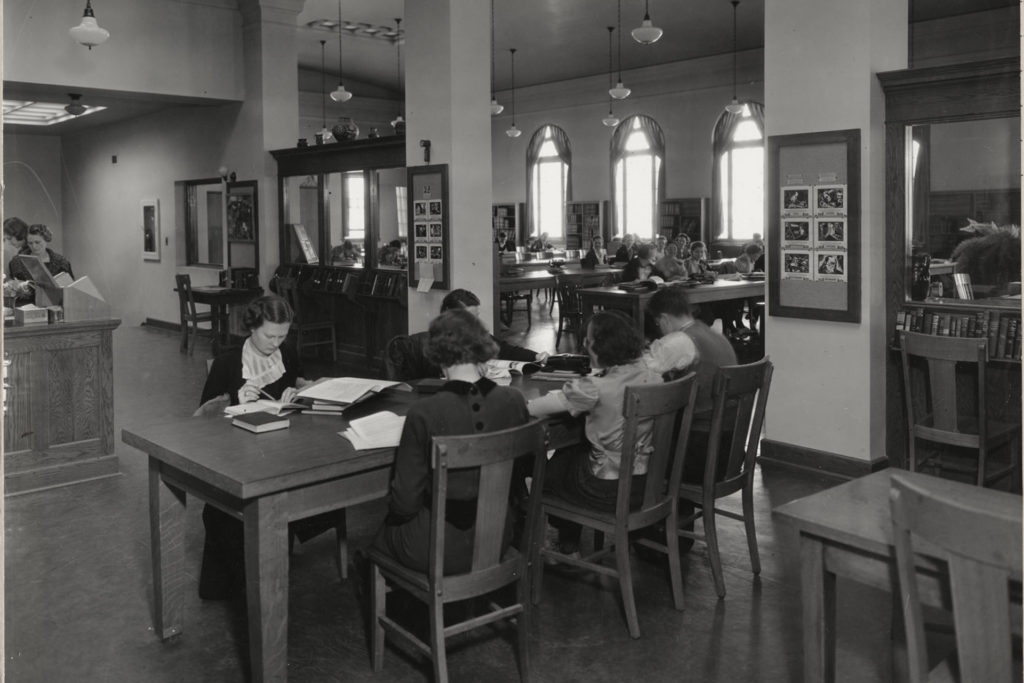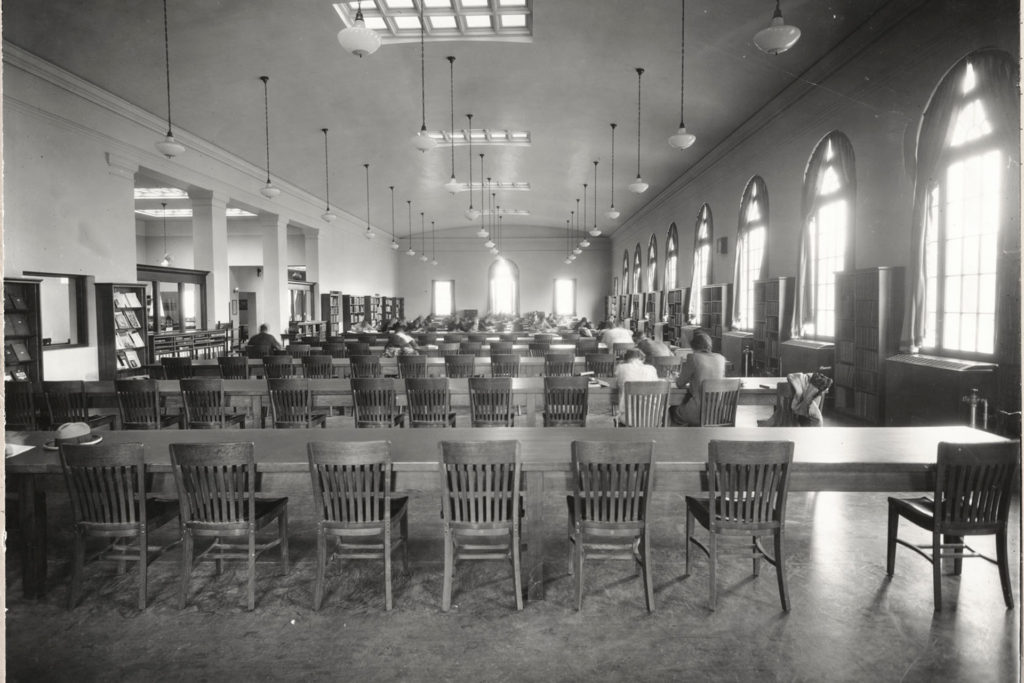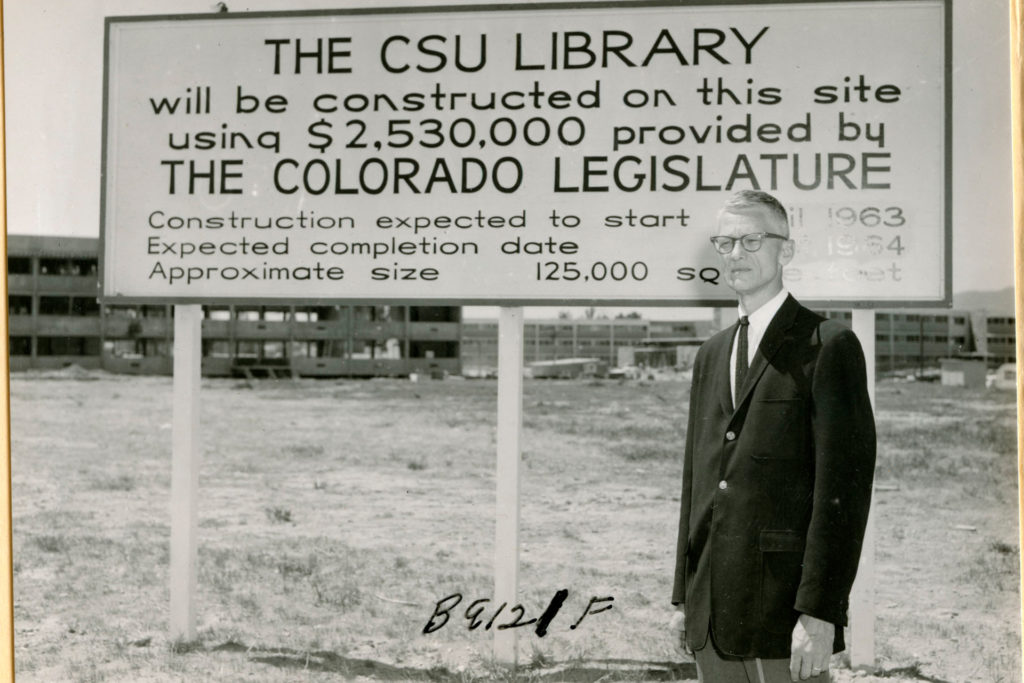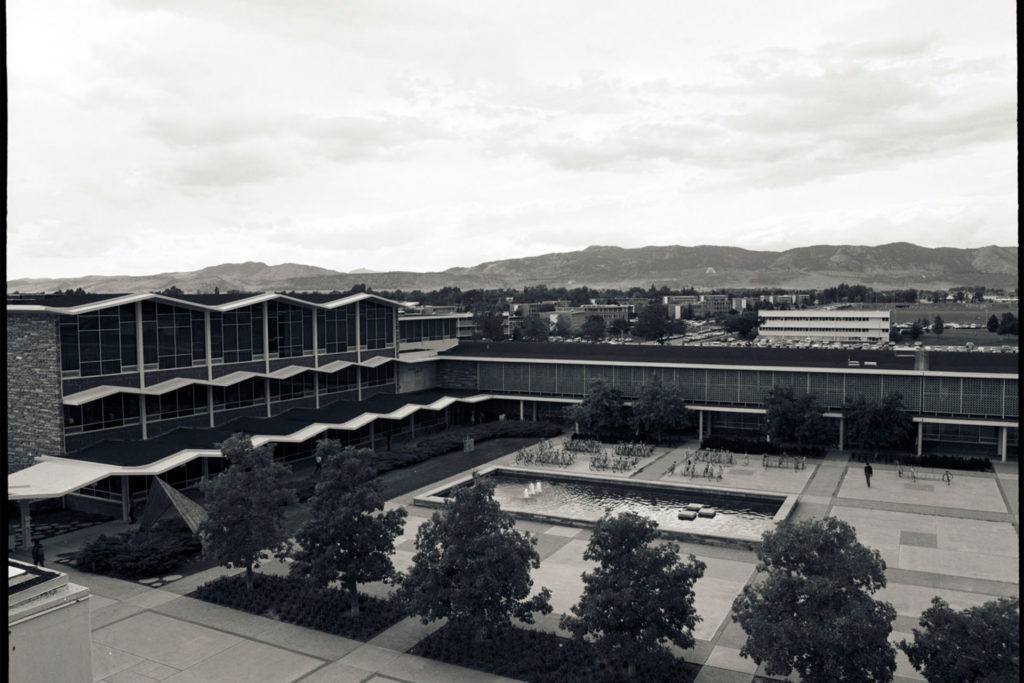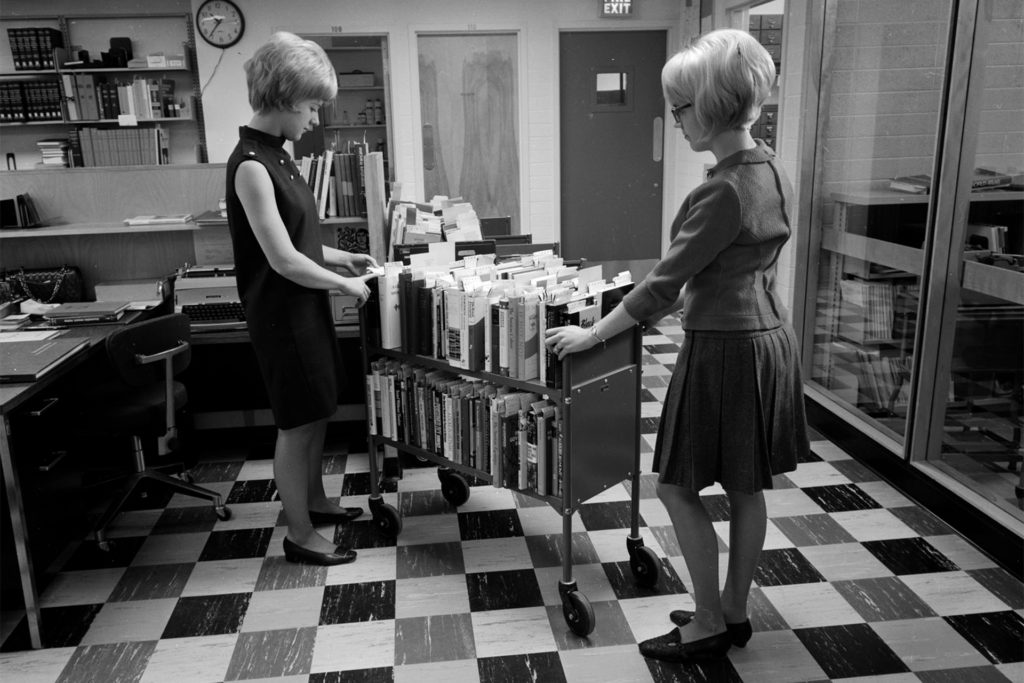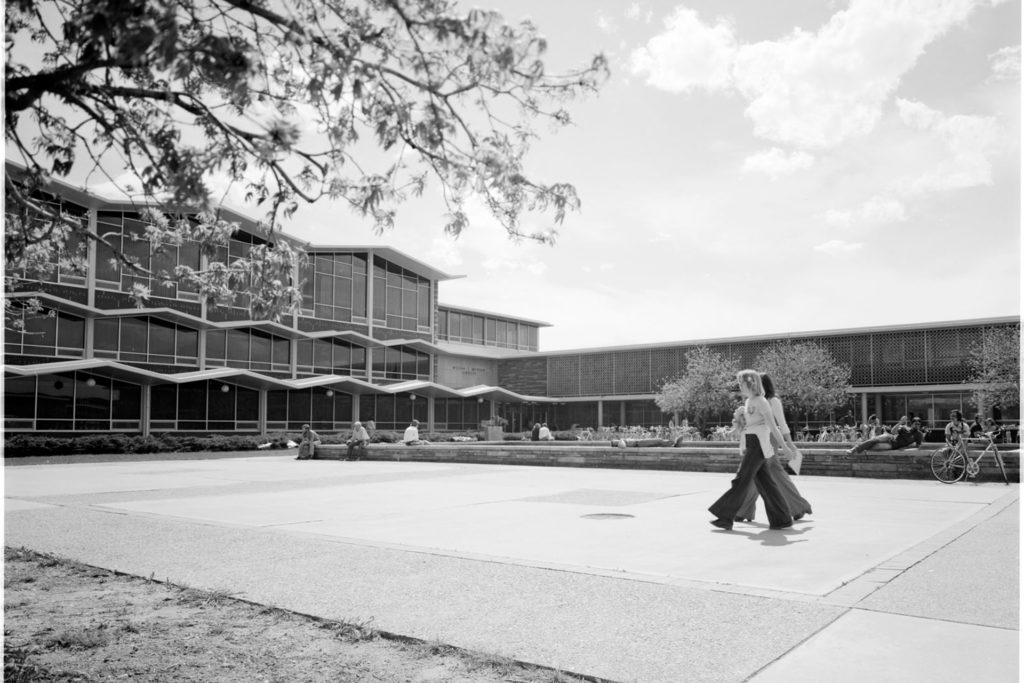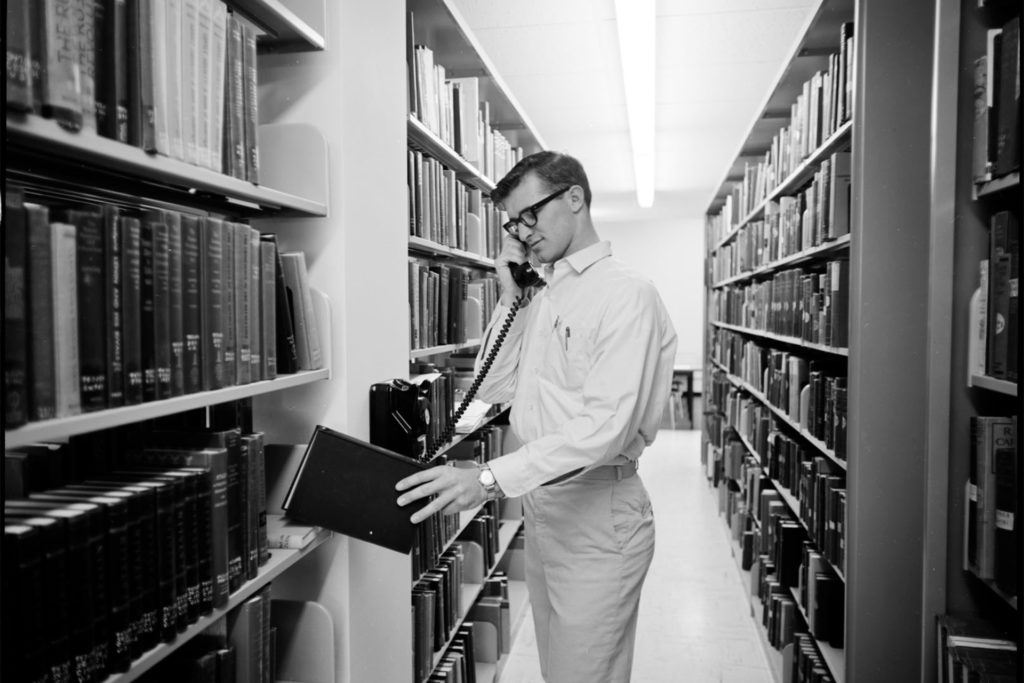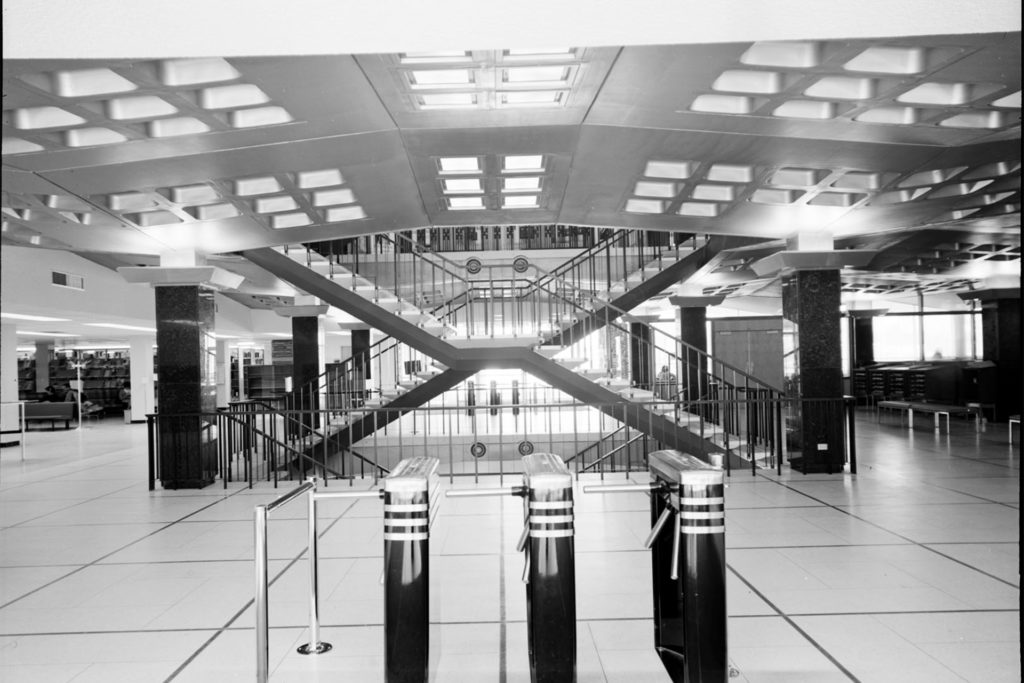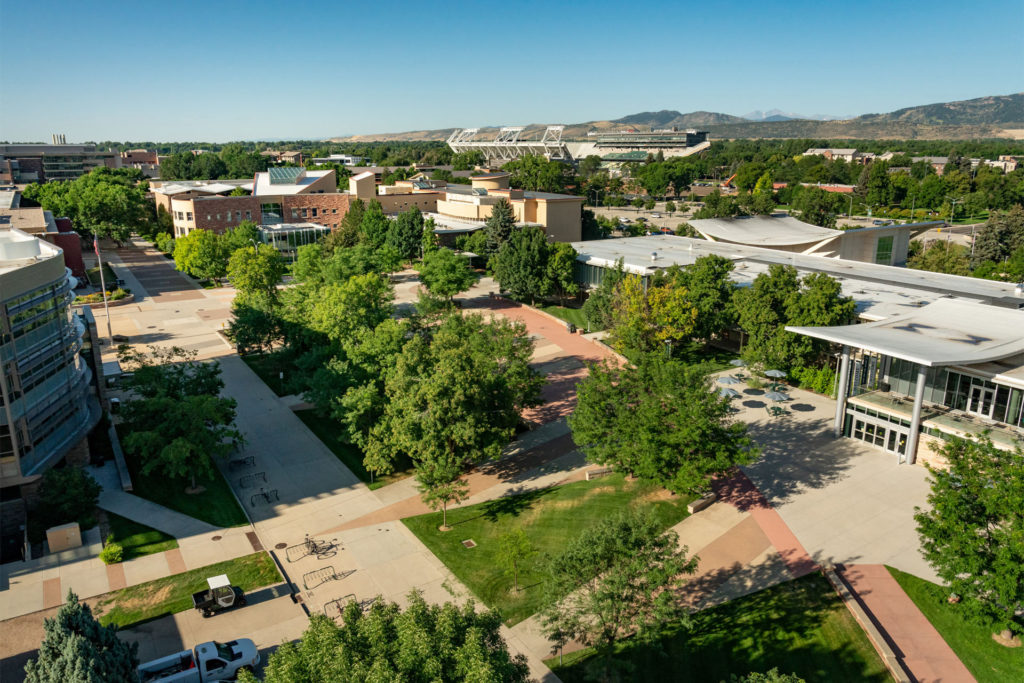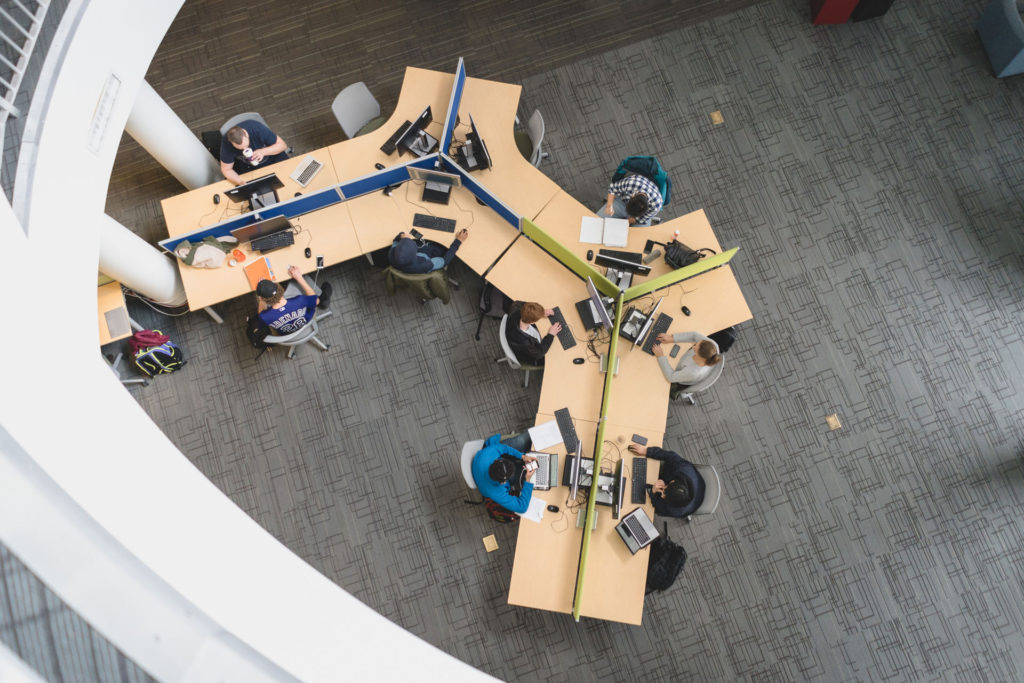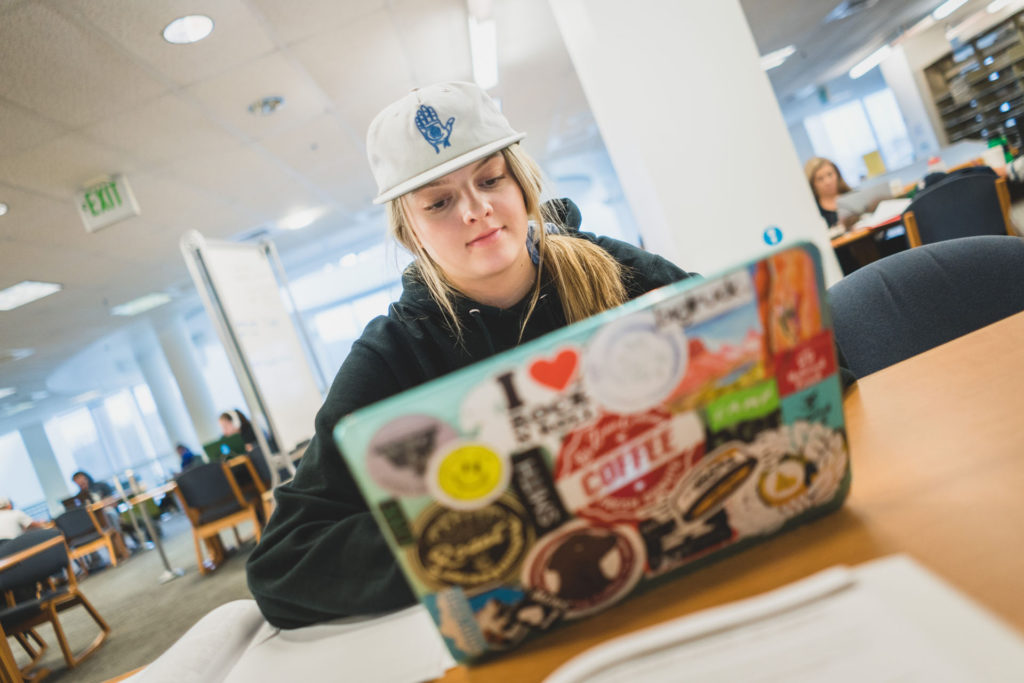Educational resources for all: CSU Libraries
A CSU @ 150 Story by Linda Meyer published on Jan. 23, 2020As librarian Charlotte A. Baker told the story, the campus library was created when the first president of the Colorado Agricultural College, Elijah Edwards, brought a Webster’s Dictionary into his office. He thumped the heavy book onto a table and declared, “Now we have started our library.”
Little did he imagine that, over the next century and a half, that one dictionary would grow into a global resource for education and knowledge for all at Colorado State University – serving the land-grant mission within the land-grant institution.
CAC opened its doors to its first three students in the fall of 1879, and the following spring a reading room was established in the building that became known as “Old Main.” Library holdings were sparse at first, consisting of a random assortment of books donated by faculty and local community members, plus inexpensive government publications and bulletins printed by the College Agricultural Experiment Station.
In 1882, the college budgeted $500 for the Library. By 1885, the collection had increased to 1,000 volumes. With book donations from federal government departments, other state colleges and individuals, this number surpassed 10,000 by the end of the 19th century.
Editor’s note
Most of the information in this article is condensed from the excellent history, Agricultural Frontier to Electronic Frontier: A History of Colorado State University Libraries, 1970-1995 by library professor emeritus Douglas J. Ernest. A longer version of this article will appear in the Spring 2020 edition of Morgan Library’s Stay Connected magazine.
In March 1880, the faculty created regulations for borrowing publications and authorized the president to appoint a librarian to oversee the reading room. Lillian Stroud, sister-in-law of President Charles Ingersoll, and several other women who were related to CAC officials volunteered to serve as librarians in those years.
Lerah G. and Marguerite “Daisy” Stratton, daughters of state legislator and college governing board secretary Harris Stratton, both graduated from the college in 1887. Lerah managed the Library from 1887 until her marriage in 1891. During her time as librarian, an addition to Old Main allowed the Library to expand into a second room in 1890. Lerah Stratton was succeeded by Celia May Southworth, daughter of governing board member R. A. Southworth.
Appointed to replace May Southworth in 1894, Daisy Stratton would be the last CAC librarian who had not received formal training. However, she was conscientious and hard-working, occasionally traveling to seek advice from staff at the Denver Public Library. She started to compile the first CAC library catalog before her untimely death in 1901 of typhoid fever.
Read more: Preserving the past for the future: Digital and Archive Services
Colorado State University’s year-long look back over 150 years of serving the land-grant mission would not be possible without the dedicated staff of the Library’s Digital and Archive Services. read more
Check out more CSU 150 stories at source.colostate.edu/csu-150.
Steady growth
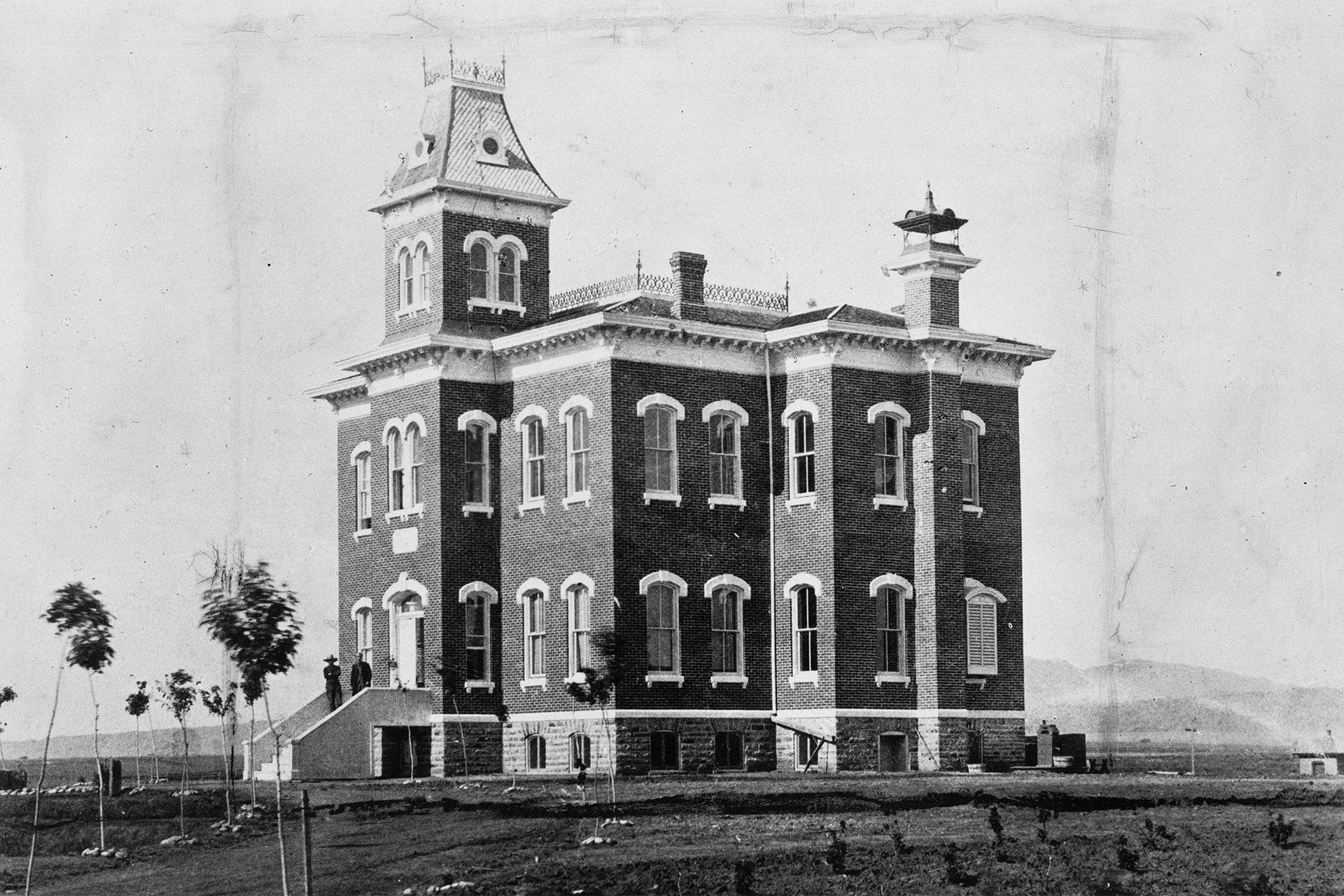
CSU Libraries started as a reading room in Old Main in 1879.
By the turn of the century, the complexity of keeping track of the wide variety of books and periodicals necessitated the services of a trained professional librarian, and Joseph Daniels was hired. Daniels energetically dived into the task of creating a catalog and classification system for the entire Library, which by 1902 occupied three small rooms crammed with bookshelves, tables and chairs.
Finally, at the end of 1904, the library moved into the main floor of the Commercial Building, now known as Laurel Hall, which was constructed as a barn before being converted to space for a physiology laboratory and then the Commercial Department. Although the new location had four times the space of the small rooms in Old Main, the basement was still occupied by a veterinary lab and experimental animals. The unpleasant smells emanating from downstairs sometimes forced everyone but the dedicated staff to vacate the building.
Initially, library hours were 8 a.m. to 5 p.m. on weekdays, with an hour closure at noon for a staff lunch break. By 1906, students were asking that the library remain open in the evenings and on Sundays, but funds did not become available for this until three years later.
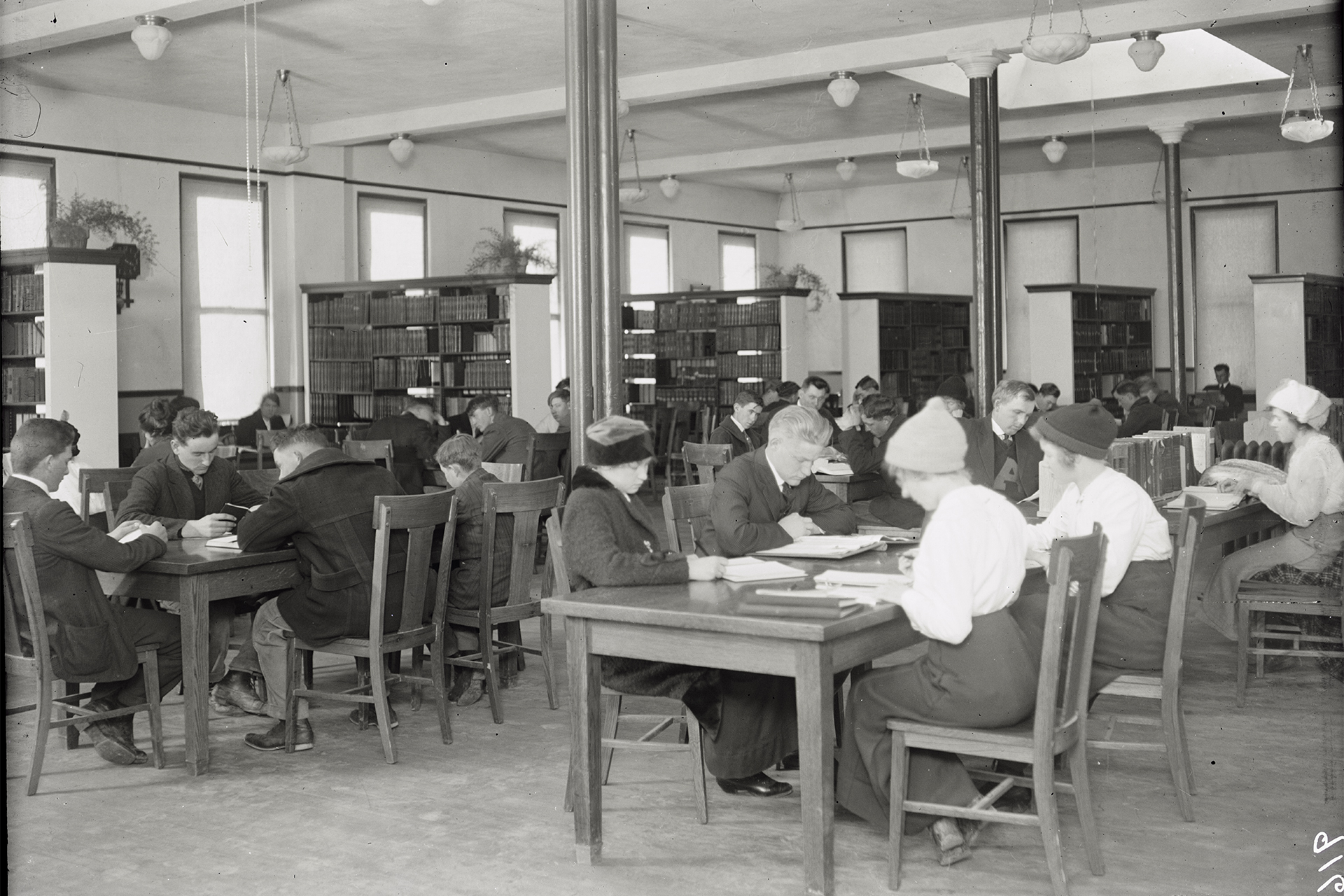
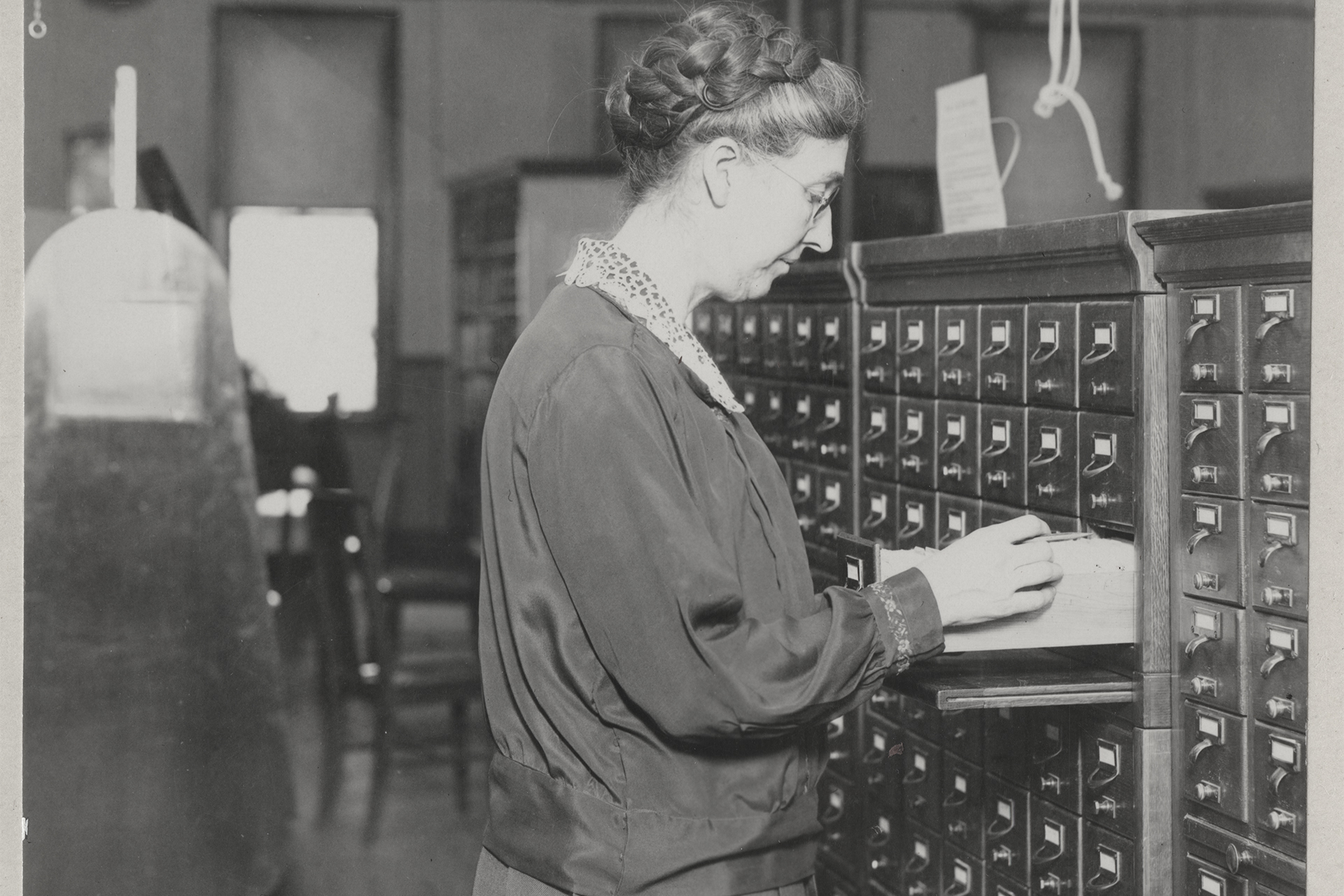
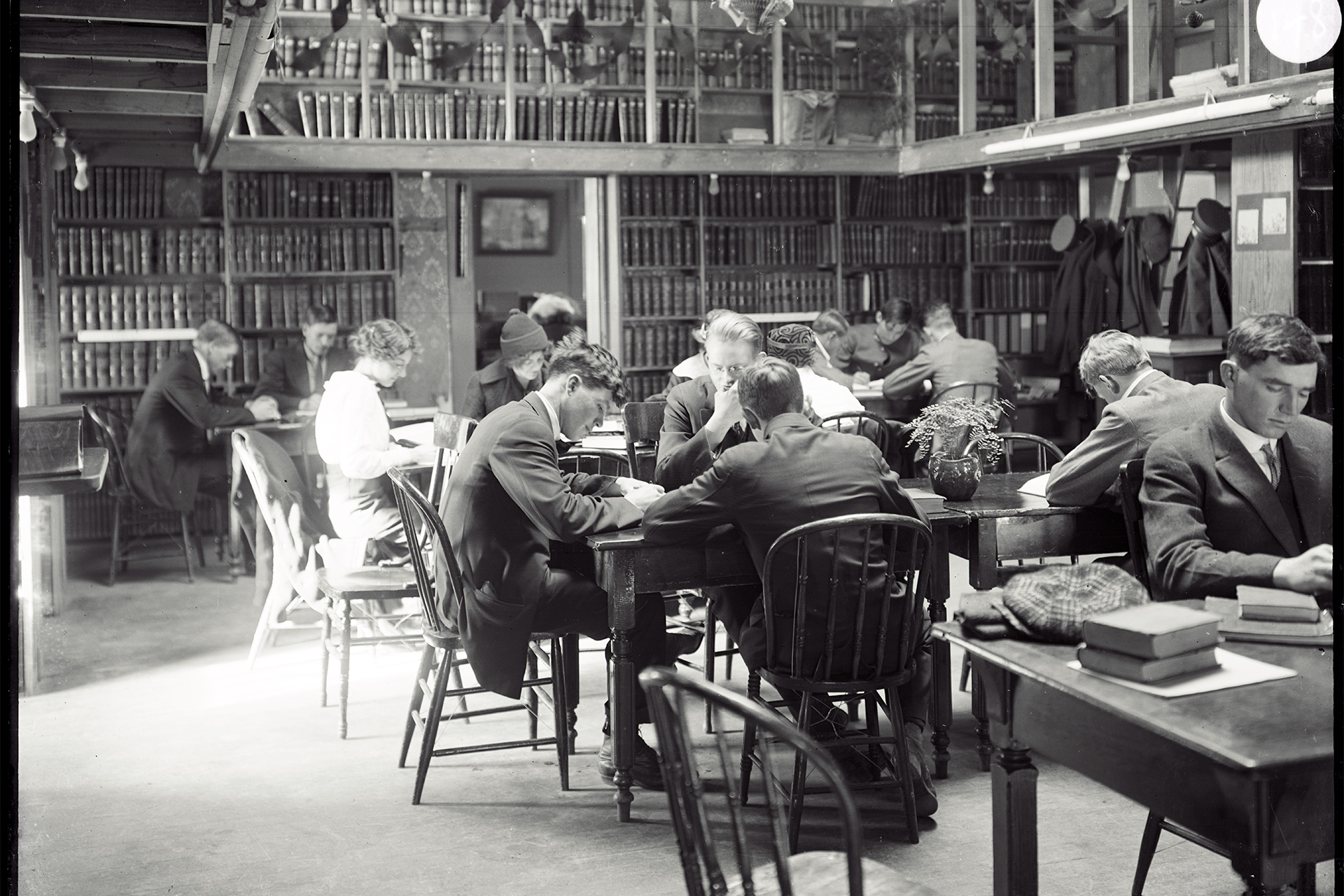
Steady growth: By the 1900s, CSU Libraries grew from a few cramped rooms with to a place where students could study.
Initially, library hours were 8 a.m. to 5 p.m. on weekdays, with an hour closure at noon for a staff lunch break. By 1906, students were asking that the library remain open in the evenings and on Sundays, but funds did not become available for this until three years later.
The number of employees slowly increased from two full-time library assistants in 1910 to four in 1916, then five in 1918. Charlotte Baker continued the push for improvements to the building, and an addition to the west side in 1915 doubled its size. Skylights and a new heating system enhanced lighting and ventilation for the reading room, and that year the malodorous veterinary lab finally moved from the basement.
In August 1927, the cornerstone was laid for a new Library on the northwest side of the Oval, part of a 10-year plan that included the construction of 15 buildings on campus. The following spring, a crew of 18 men and six women moved the entire collection in less than eight days into a beautiful new facility that could seat 500 people and house 150,000 volumes. With “LIBRARY” etched in stone above the front door, all who entered could see that this edifice was the first constructed specifically for that purpose on campus.
The stock market crashed only 18 months after the new building opened, and the decade of the 1930s saw austerity programs, restricted book budgets, and government assistance in the form of subsidized jobs for college students at the library. In 1936, after serving the CAC library for 30 years, Charlotte Baker retired and was succeeded as director by James G. Hodgson.
Modernization
Then and now: Morgan Library as well as the CSU campus has undergone significant transformations over the years.
In addition to pushing for increased funding for books and staffing, and accommodating up to 1,500 service personnel on campus for training programs during World War II, Hodgson shepherded the Library on the Oval through two floods. The August 1951 flood cracked the basement floor, and it became apparent that a new building was needed in a site less susceptible to flooding.
In 1958, the University’s governing board authorized preliminary planning for a new library building. The William E. Morgan Library, named for CSU’s president from 1949 to 1969, opened to students in January 1965. At four times the size of the Oval building, it would allow the collections from the main Library, storage and four branch libraries to be combined in one location.
In 1968, history professor James E. Hansen II was appointed to write a book commemorating the University’s first 100 years. Discovering that CSU did not yet have an archives, Hansen gathered the historical records of the institution and head librarian LeMoyne Anderson provided a small corner of the library with peg-board walls to store them. CSU’s governing board officially created the University archives in 1975, and the Library collection reached one million volumes in October 1976, as Hansen’s history, Democracy’s College, was added to the shelves.
The old card catalog was replaced by an online system in 1994, and modernization of the University’s library was designated a campus priority by President Albert Yates. Work on a 125,000-square-foot addition featuring computer labs and more than 300 public access computer terminals began in 1995. The renovation was nearing completion on July 28, 1997, when a flash flood inundated the entire lower level of the Library. Hundreds of thousands of books and periodicals were lost or damaged. During the next year, the building was dried out, damaged interior space repaired, and a retaining wall added along its west side.
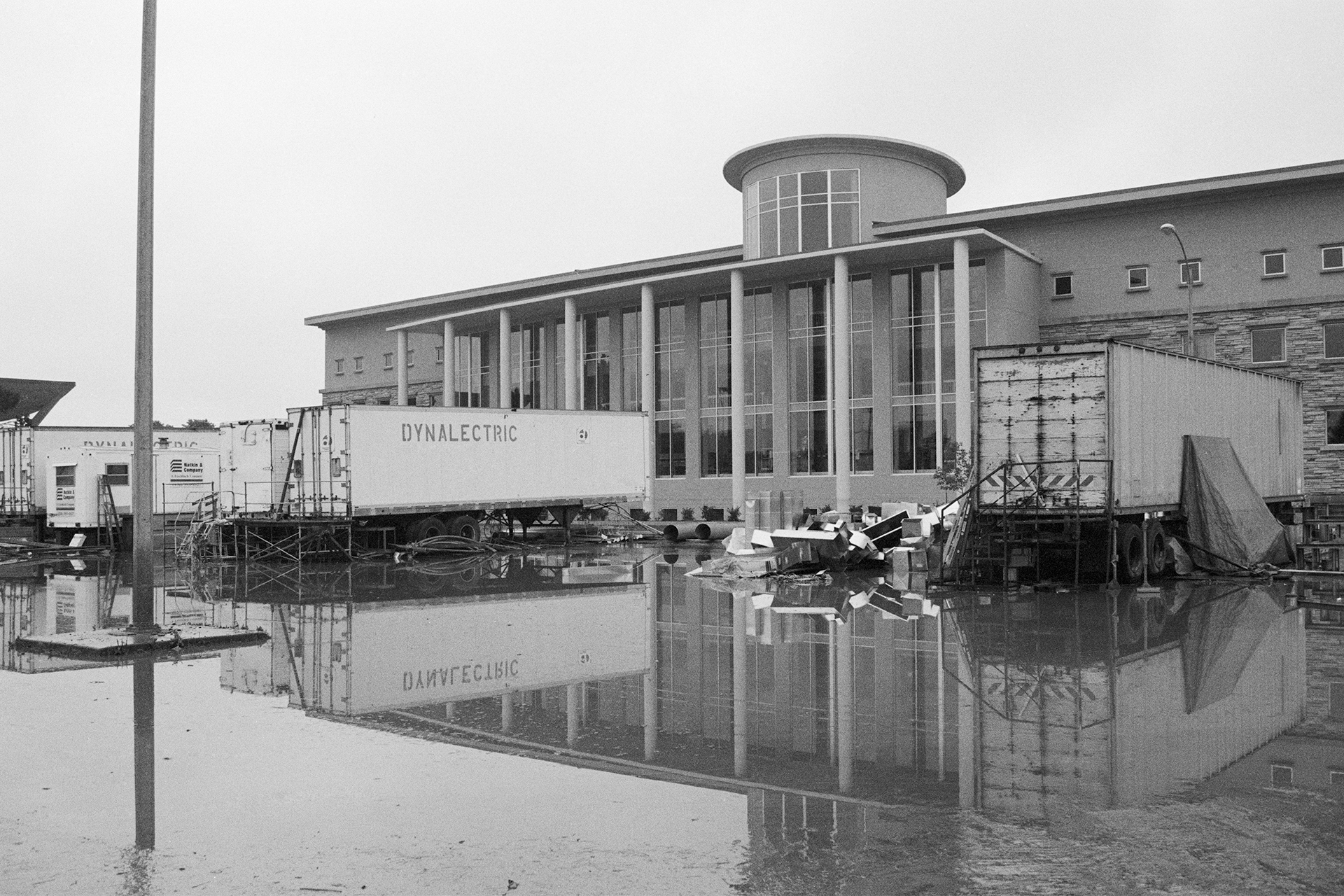
CSU Libraries has survived two floods, the most recent in 1997 at Morgan Library.
In 2008, under the leadership of Dean of Libraries and Vice President of Information Technology Patrick Burns, a redesign to meet the changing needs of users moved forward. Study areas and computer workstations were added and thousands of books moved to the Book Storage Facility on Lake Street to be housed in a new wing with movable compact shelving, completed in 2011. Also that year, a northern addition called “The Cube” provided a 24-hour study space, interior renovations added a coffee shop named “Morgan’s Grind,” more group study areas, an event hall, and a “Collaboratory” area with larger meeting spaces.
Heading into 2020 with newly appointed Dean Karen Estlund, the CSU Libraries continues serving the land-grant mission by facilitating access to information and technology for the University, the state of Colorado, and the online world. Liaison librarians teach how to use journal databases, digitization staff boost online resources, and technology professionals keep workstations and laptops secure and up to date. Behind the scenes, dedicated library technicians and other employees work to organize, catalog, repair, preserve and provide access to resources within the Library and throughout the world.
CSU Libraries in photos
